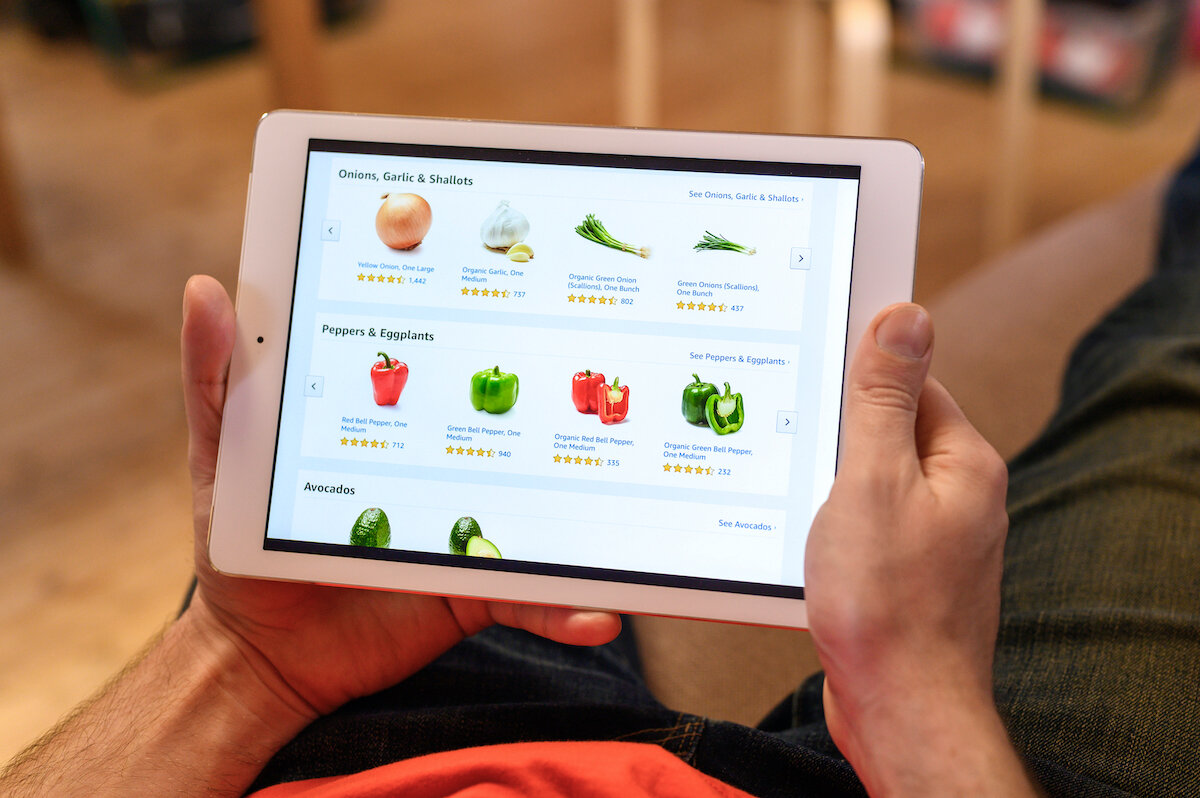Personalized grocery shopping recommendations are undeniably effective. 91% of consumers prefer to receive personalized recommendations. And when done well, they consistently deliver in excess of 5% basket uplift. But did you ever think about why recommendations work so well? Understanding the psychology behind why shoppers respond to recommendations can help retailers understand how to make them more effective. Here’s a dive into the four motivations that lead shoppers to respond to personalized recommendations.

You are shopping online for groceries, whittling down your list of needs, when a photo recommendation pops up for an item you have not yet selected. Almost unconsciously, you pick the item, add it to your virtual cart, and carry on. “Great, that’s one less thing I have to search for,” you probably think to yourself, as you click and scroll your way through your journey. You have just experienced personalized recommendation at its best. When executed correctly, personalized shopping recommendations are undeniably effective. According to a sizeable Accenture survey, a whopping 91% of consumers prefer to shop with retailers who provide them with relevant, personalized recommendations. In our own work here at Halla, we have consistently seen personalized recommendations deliver basket uplift exceeding 5%— even in physical stores where the shopper must walk to the recommended item to select it. Some studies even attribute a 200% performance increase when calls to action are personalized, rather than generic. It’s clear that personalized recommendations work.
But did you ever stop to think about why? Understanding the psychology behind why recommendations work can really help retailers understand how to make recommendations more effective. To get to the bottom of this, the natural place to start is to ask a parallel question—”Why do people buy things?” If we can comprehend the basic motivating factors behind making a purchase in the first place, we can understand how to help buyers find what they need. Let’s take a look at a few of those motivations:

1. It meets a key objective: Whether a recommended product meets a simple or a complex expectation, understanding a shopper’s objective goes a long way towards an immediate purchase as well as long-term loyalty. For a cost-conscious shopper, for instance, you can offer an alternative generic product with close characteristics to the brand-name product they are already aware of. When you see a shopper add discount sliced bread and jam to their cart, for instance, proposing your high-quality, low-cost, house brand of peanut butter is likely to hit the mark.Consider also, how to serve shoppers with food allergies or dietary restrictions. If past behavior suggests lactose intolerance, for example, you could offer lactose-free or A2 protein vanilla-flavored ice cream to go with that pie crust and apple filling. If it looks like your shopper is actually planning for a birthday party, you can offer candles and disposable partyware. Whatever it is, anticipate what your shopper is looking for, and why. Then make personalized recommendations that help them find what they need.

2. It provides genuine value: A second way you can be smart about personalization is to make recommendations that deliver real value. While that may align quite nicely with meeting budgetary objectives as we just saw, for some shoppers at some times, value has little to do with cost. It can be very hard to understand the real volume of a product like boxed cereals or tortilla chips when buying online. A SKU that’s cheaper is not necessarily better value—and shoppers will feel cheated when the product you recommended is finally delivered. The key is to make sure that whatever you are offering consistently meets or exceeds the value ratio of what shoppers normally encounter on their own. If they are searching for paper towels and you introduce a bulk-pack of their favorite brand which is not normally available in stores, they will remember you well. Also keep in mind that brand affinity or perception of quality is especially important for fresh items like lettuce and avocados and for luxury items like gourmet wine and cheese.

3. It saves them time/trouble: Online shopping offers a clear convenience advantage over trudging through the aisles and then hauling groceries back home from a brick-and-mortar store, right? Not according to a joint investigation between Google and Bain & Company. It turns out that only 42% of 8,000 online shoppers surveyed said that shopping online saved them time versus shopping in store! That’s crazy. This represents a great opportunity for grocers to improve the online experience using personalized recommendations. To save shoppers time, why not recommend bulk items that your shoppers always buy? They can transfer the entire list to their cart at once or prune selections as needed. Or how about proactively recommending items that fit recipes that shoppers seem to be building? If you see fresh basil, garlic, and olive oil—you should be recommending parmigiano reggiano, pine nuts, and a nice box of rigatoni to go with that pasta pesto they have in mind. Not only does this save shoppers time, it also helps them to avoid the decision paralysis that plagues the online shopping experience.
4. It fits their personality: Finally, personalized recommendations should be the very embodiment of the “know your customer” adage. One of the deepest, most universal human desires is to be understood, ranking not far behind basics like food, water, and shelter in the hierarchy of human needs. There’s no sense, then, in offering fresh butcher’s cuts to a shopper that is vegan, or suggesting junk food to a customer who identifies as a health nut. Bad recommendations don’t just fall flat, customers may even feel offended that “you think I would like that?!”

Understanding your shoppers’ personality traits is key to knowing if you should stick to the basics for a conservative shopper, for instance, or if you can delight a more adventurous customer with new food ideas that match their palate, diet, and personality. Don’t just use simple “people like you bought this” heuristics. Really dig into the psychology of food and know your customers’ “why.” Your recommendations will perform far better if you nudge shoppers in the direction that they already want to go, instead of shoving them somewhere that isn’t natural. Recommendations work because they help customers meet their genuine needs in a valuable, convenient, and personal way. The closer you can get to understanding your customers and why they buy things in the first place, the more powerful, and profitable your recommendations will be.

